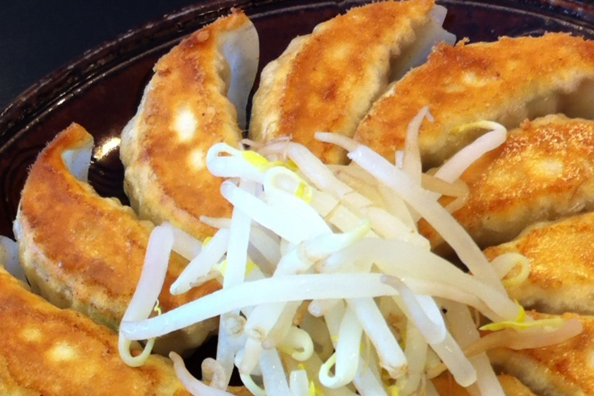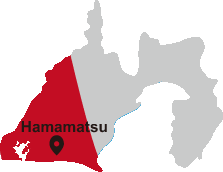Gyoza Town - Hamamatsu Gyoza Tasting Tours

What are gyoza?
Gyoza (dumplings) are known around the world as a traditional Chinese food.
They are made by adding water to flour and flattening the mixture to make the dough. The dough is then wrapped around a filling (meat, shrimp, vegetables, etc.).Gyoza can be steamed, boiled, grilled, or fried.
In China, boiling is the most common cooking style; while pan-fried gyoza is the most popular form in Japan. It is interesting to note that although gyoza are eaten as a main dish in China, they are normally a side dish in Japan. Chinese people visiting Japan find this unusual and it is a difference between the food cultures of the two countries.
Gyoza first became popular in Japan after WWII. It is believed that soldiers returning from China began selling gyoza, and the practice spread from there. The fillings used at the time were chosen based on whatever ingredients were easily available in each particular region. The type of filling used in Hamamatsu was cabbage, onion, and pork--which went on to become the most popular style.
They are made by adding water to flour and flattening the mixture to make the dough. The dough is then wrapped around a filling (meat, shrimp, vegetables, etc.).Gyoza can be steamed, boiled, grilled, or fried.
In China, boiling is the most common cooking style; while pan-fried gyoza is the most popular form in Japan. It is interesting to note that although gyoza are eaten as a main dish in China, they are normally a side dish in Japan. Chinese people visiting Japan find this unusual and it is a difference between the food cultures of the two countries.
Gyoza first became popular in Japan after WWII. It is believed that soldiers returning from China began selling gyoza, and the practice spread from there. The fillings used at the time were chosen based on whatever ingredients were easily available in each particular region. The type of filling used in Hamamatsu was cabbage, onion, and pork--which went on to become the most popular style.
Hamamatsu, the gyoza capital of Japan
In Hamamatsu, restaurants selling gyoza already existed during the Taisho period (1912-1926). Families made gyoza in their homes and restaurants specializing in gyoza dotted the town. According to the Ministry of Internal Affairs and Communications' Household Expenditures Survey, in 2011, gyoza sales in Hamamatsu were the highest in the country--overtaking Utsunomiya, which had held the top spot for 15 years. Hamamatsu Gyoza have continued to steadily gain recognition throughout the country. In recent years, it has become normal to see tourists walking through town with a copy of the Hamamatsu Gyoza Map (produced by the Hamamatsu Gyoza Society) tucked under their arms, as they sample gyoza at different restaurants. (The map can be obtained at various places like tourist information centers or Hamamatsu Castle, ) In addition, the Hamamatsu Gyoza Society also sponsors an annual gyoza festival, which always draws large numbers of gyoza aficionados.
Characteristics of Hamamatsu Gyoza
Ingredients
The most popular ingredients are cabbage, onion, and pork. Light seasoning mingles with the savory flavor of the pork.
Circular Frying Style
During the early years when eating gyoza was growing in popularity in Hamamatsu, the stalls used pans for frying gyoza. Cooks arranged gyoza in a circular pattern so that they could fry as many as possible at the same time--and the style remains popular to this day.
A Side of Bean Sprouts
Gyoza and bean sprouts complement each other wonderfully. By combining the two, it is possible to eat countless numbers of gyoza.

2015.5.20 update
Content may be subject to change after publication. Please also note that we are not accountable for loses and damages that may occur as a result of said changes.
Content may be subject to change after publication. Please also note that we are not accountable for loses and damages that may occur as a result of said changes.





